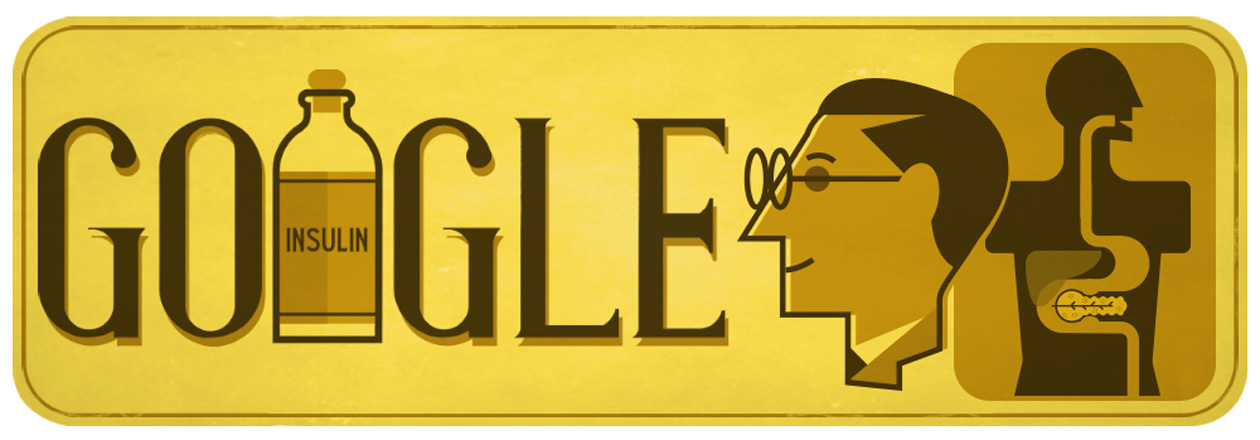Frederick Banting, Sir Frederick Banting’s 125th Birthday
 |
| Frederick Banting, Sir Frederick Banting’s 125th Birthday |
Frederick Banting, Sir Frederick Banting’s 125th Birthday
Frederick Banting, Sir Frederick Banting’s 125th Birthday
Frederick Banting, Sir Frederick Banting’s 125th Birthday
Frederick Banting, Sir Frederick Banting’s 125th Birthday
#googledoodle
Frederick Banting
Scientist
Sir Frederick Grant Banting KBE MC FRS FRSC was a Canadian medical scientist, physician, painter and Nobel laureate noted as the first person to use insulin on humans
Born: November 14, 1891, Alliston, New Tecumseth, Canada
Died: February 21, 1941, Dominion of Newfoundland
Books: economic background of the Gospels
Spouse: Henrietta Ball (m. 1937–1941), Marion Robertson (m. 1924–1932)
Awards: Nobel Prize in Physiology or Medicine, John Scott Legacy Medal and Premium
Education: University of Toronto Faculty of Medicine, University of Toronto
Isolation of insulin[edit]
Banting (right) with Charles H. Best, ca. 1924
An article he read about the pancreas piqued Banting's interest in diabetes. Banting had to give a talk on the pancreas to one of his classes at Western University on November 1, 1920, and he was therefore reading reports that other scientists had written.[7]:51–52 Research by Naunyn, Minkowski, Opie, Schafer, and others suggested that diabetes resulted from a lack of a protein hormone secreted by the islets of Langerhans in the pancreas. Schafer had named this putative hormone "insulin". Insulin was thought to control the metabolism of sugar; its lack led to an increase of sugar in the blood which was then excreted in urine. Attempts to extract insulin from ground-up pancreas cells were unsuccessful, likely because of the destruction of the insulin by the proteolysis enzyme of the pancreas. The challenge was to find a way to extract insulin from the pancreas prior to it being destroyed.
Moses Barron published an article in 1920 which described experimental closure of the pancreatic duct by ligature; this further influenced Banting's thinking. The procedure caused deterioration of the cells of the pancreas that secrete trypsin, but left the islets of Langerhans intact. Banting realized that this procedure would destroy the trypsin-secreting cells but not the insulin. Once the trypsin-secreting cells had died, insulin could be extracted from the islets of Langerhans. Banting discussed this approach with J. J. R. Macleod, Professor of Physiology at the University of Toronto. Macleod provided experimental facilities and the assistance of one of his students, Dr. Charles Best. Banting and Best, with the assistance of biochemist James Collip, began the production of insulin by this means.
As the experiments proceeded, the required quantities could no longer be obtained by performing surgery on living dogs. On November 16, 1921, Banting hit upon the idea of obtaining insulin from the fetal pancreas. He removed the pancreases from fetal calves at a William Davies slaughterhouse and found the extracts to be just as potent as the dog pancreases. Pork and beef would remain the primary commercial sources of insulin until they were replaced by genetically-engineered bacteria in the late 20th century. In spring of 1922, Banting established a private practice in Toronto and began to treat diabetic patients, including Elizabeth Hughes Gossett, daughter of then U.S. Secretary of State Charles Evans Hughes.
Read More: https://en.wikipedia.org/wiki/Frederick_Banting

No comments:
Post a Comment